The Church of the Loaves and Fish or in short the Church of the Multiplication is located in Ein Sheva (Tabgha), off the shores of the Sea of Galilee. Furthermore, the church commemorates the miracle of feeding the multitude, which according to the New Testament was performed by Jesus at the site, in which he fed 5,000 people with five loaves of bread and two fish. Moreover, the first church was built on the site around the year 350 CE and was considerably expanded around the year 480 CE. Then the church was destroyed by the Sassanids in the early seventh century. In 1932, the remains of the ancient churches were exposed, and a temporary structure was erected on the site.
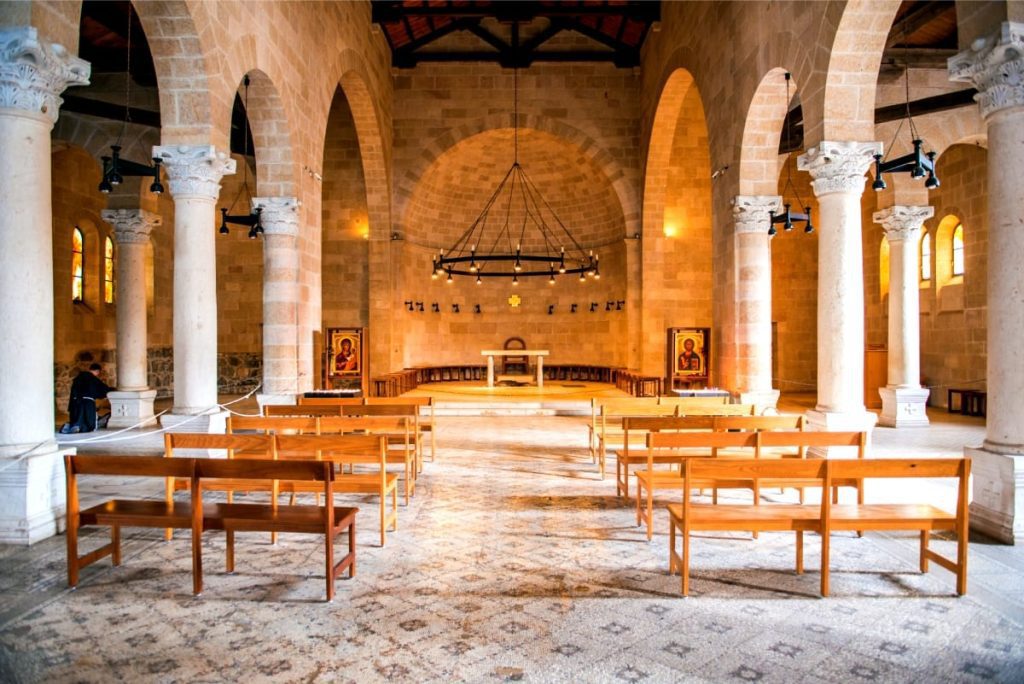
UNDER THE ALTAR THERE IS THE ORIGINAL ROCK UPON WHOM JESUS PERFORMED THE MIRACLE
In 1982 the present church was built, restoring the old church, except for a few additions. The builders made a clear distinction between the remains of the ancient church and the modern one – the lower part of the walls made of basalt, belongs to the ancient structure; While the modern additions were made of light Jerusalem stone. The original mosaics from the fifth century are made of colored stones, and the mosaics in black and white were added in the 20th century.
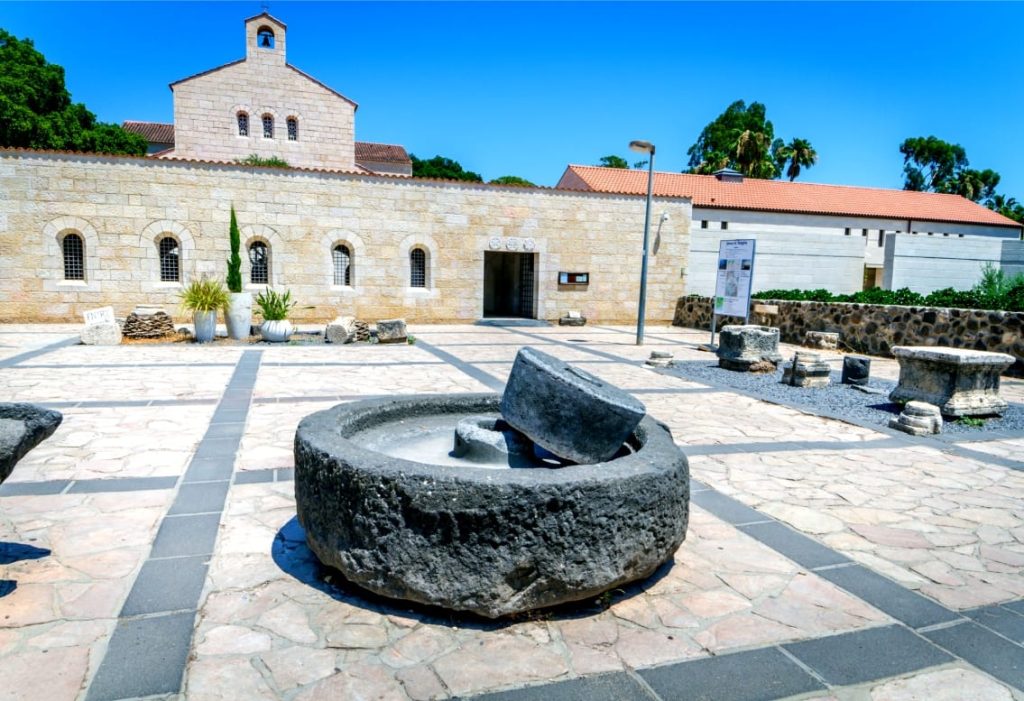
THE MODERN CHURCH WITH A BYZANTINE OLIVE PRESS PLACED AT COURTYARD
The First Church of the Multiplication
The site is considered as the place where the miracle of Feeding of the Multitude. So around the year 350 CE a Byzantine church commemorated it. The church was built with the help of Joseph the Comes (“Joseph the Friend”), a wealthy Jew from Tiberias, and the rock traditionally attributed to the place where the miracle was performed stood in its center and served as an altar. This church had only one aisle that ended at the apse, and its location was influenced by the main road that passed north of it, which was an offshoot of the Via Maris (the Road of the Sea).
Egeria, a Christian pilgrim from the beginning of the Byzantine period, describes the church in her writings. She spent time at the Sea of Galilee and comments on the traditions, which include that of Christ feeding the multitude and the place where he performed his miracles.
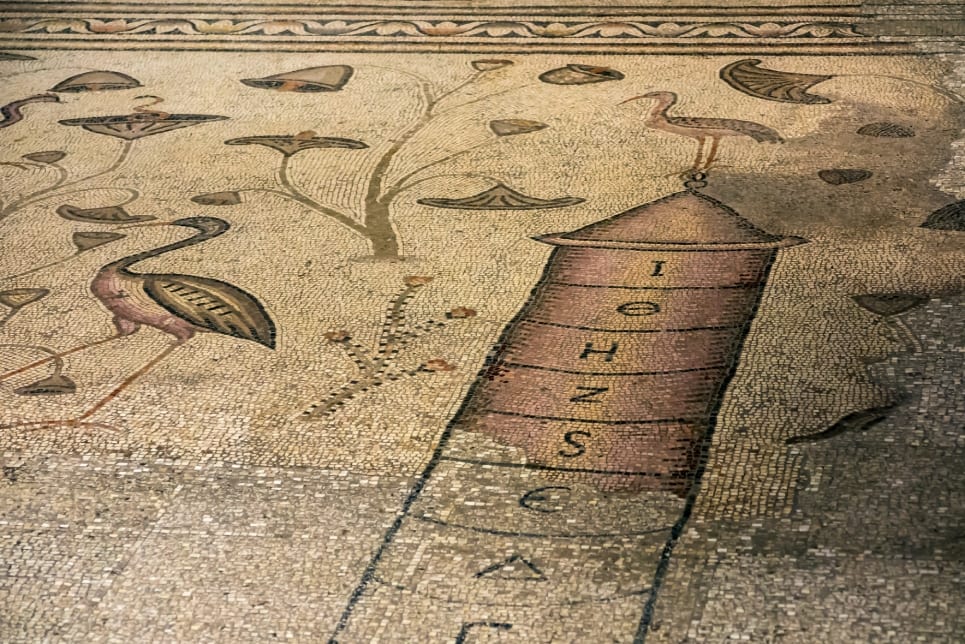
ONE OF THE ORIGINAL MOSAICS FOUND AT THE CHURCH
The Second Church
The church was significantly enlarged around the year 480 CE; with floor mosaics also added at this time. These renovations are attributed to the Patriarch Martyrius of Jerusalem. In 614 CE the Persians destroyed the Byzantine church. After 614 CE destruction, the exact site of the shrine was lost for some 1,300 years. In 1888 the site was acquired by the German Catholic Society for Palestine (Palästina-Verein der Katholiken Deutschlands) which was associated with the Archdiocese of Cologne. An initial archaeological survey was conducted in 1892, with full excavations beginning in 1932. In addition, these excavations resulted in the discovery of mosaic floors from the 5th-century church, which was also found to be built on the foundations of a much smaller 4th-century chapel.
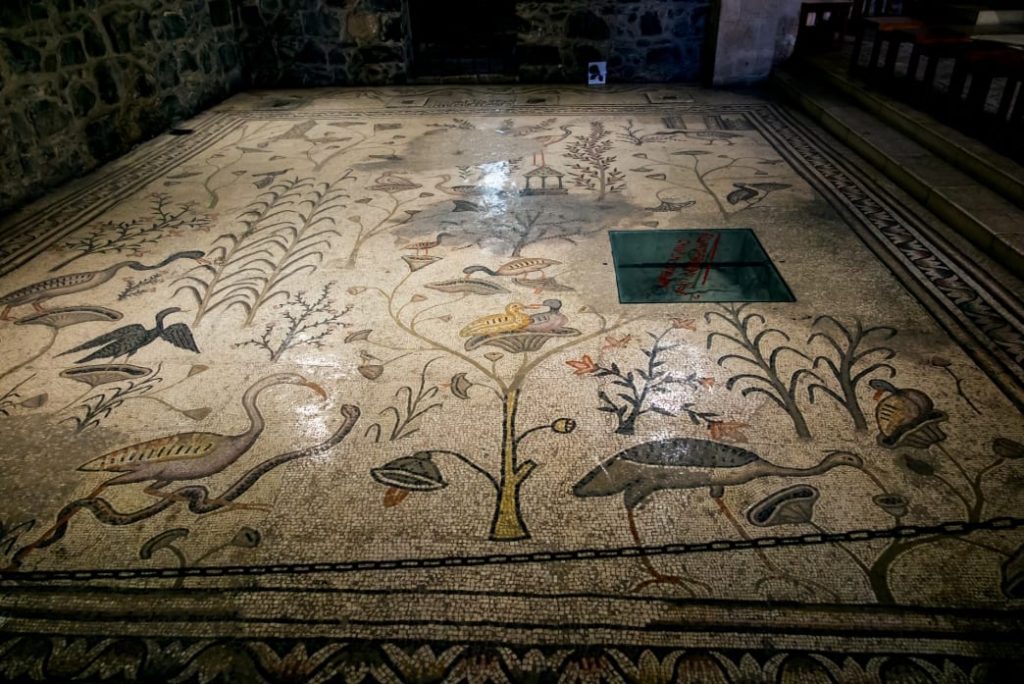
ONE OF THE ORIGINAL BYZANTINE MOSAICS
20th-Century Reconstruction
Since 1939 the property has been administered by the Benedictine order as a daughter-house of the Dormition Abbey in Jerusalem. Additionally, the ground was bought in 1888 by the German Catholic Palestine Mission, archeological research started in 1892. Then in the 1930s, a provisional protective structure was erected above the holy rock and the Byzantine mosaics. The current church, inaugurated in 1984; was built to the same floor plan as the 5th-century Byzantine church; some of the ancient black basalt walls have survived and remained visible.
The Cologne-based architects Anton Goergen and Fritz designed a simple, modest building in a somewhat neo-Byzantine style. Furthermore, the windows are fitted with alabaster panels. The bright limestone stones were brought from a quarry near Taybeh (between Jericho and Ramallah); the red bricks from Italy, and the roof timbering from Germany. In addition, the portal is a work by the German sculptor Elmar Hillebrand.
You can read more about these kinds of sites on my Nazareth and Sea of Galilee Tour. It’s a fascinating tour! I take my guests to see all the important Christian sites in the area.
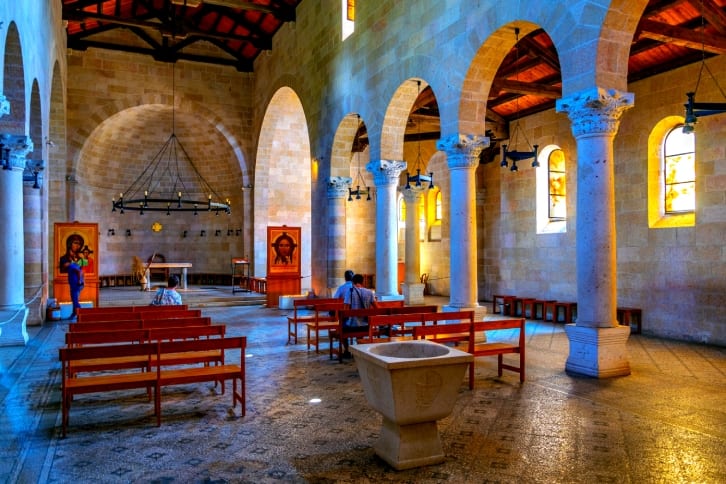
I LOVE THE LIGHTING INSIDE THE CHURCH WITH THE ALABASTER WINDOWS







